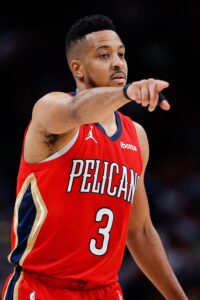The Grizzlies were an ascendant team entering the 2022/23 season, having steadily increased their winning percentage from .268 to .683 over the course of the previous five years. Coming off a 56-win showing and their first playoff series win since 2015, the young club was looking to avoid regression and take another step toward title contention.
Memphis did win 51 games in ’22/23, the second-highest total in the Western Conference, but you might be hard-pressed to find many NBA observers willing to call the team’s season a success.
Franchise player Ja Morant, who signed a five-year, maximum-salary extension last summer, began to make more headlines for his troubling behavior off the court than his highlight-reel plays on it, culminating in an eight-game suspension after he flashed a gun at a Colorado strip club during an Instagram Live stream.
Dillon Brooks, whose fiery playing style and penchant for talking trash had come to epitomize the brash attitude of the young Grizzlies, earned a spot on the All-Defensive Second Team. However, his offensive game declined; he earned multiple suspensions for technical and flagrant fouls; and he chose the wrong moments to needle opposing players.
The Grizzlies were quickly eliminated from the playoffs in the first round by the seventh-seeded Lakers, with LeBron James responding to Brooks’ barbs after a Game 2 Memphis win by leading L.A. to three wins in the next four games, including a 40-point trouncing in a decisive Game 6.
Since the Grizzlies’ season ended, Morant has been indefinitely suspended again following another problematic Instagram Live video, while one report indicated that Brooks won’t be re-signed “under any circumstances.” In Desmond Bane and Jaren Jackson Jr., the franchise still has a pair of core players untouched by controversy, but Morant’s off-court actions and Brooks’ impending departure create significant uncertainty for the team heading into an important summer.
The Grizzlies’ Offseason Plan
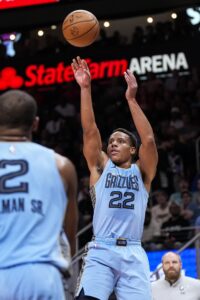 With 13 players on guaranteed contracts for 2023/24, the Grizzlies likely won’t be looking to overhaul their roster or make major changes to their core. But roster tweaks are coming, and Memphis will have work to do with a pair of its cornerstone players – Bane and Morant – this summer.
With 13 players on guaranteed contracts for 2023/24, the Grizzlies likely won’t be looking to overhaul their roster or make major changes to their core. But roster tweaks are coming, and Memphis will have work to do with a pair of its cornerstone players – Bane and Morant – this summer.
Let’s start with Bane, who will be eligible for a rookie scale extension beginning on July 1, the week after he turns 25. Bane has made 42.5% of his three-pointers since entering the NBA and has continued to improve as an all-around scorer and distributor, averaging a career-best 21.5 PPG and 4.4 APG this past season. He’s not an elite defender, but he’s no slouch on that end of the floor either, having taken on challenging perimeter assignments when Brooks missed games.
After players like Tyler Herro and Jordan Poole signed rookie scale extensions worth at least $30MM annually last offseason, it’s safe to assume Bane will at least match – and almost certainly exceed – their deals. In fact, it wouldn’t surprise me if the Grizzlies put a maximum-salary offer on the table. Memphis isn’t a traditional free agent destination, so the team has to take care of the players it spends years developing, and there’s probably no need to nickel-and-dime one of the club’s rising stars when there are so many question marks surrounding another one.
While the Grizzlies’ offseason business with Bane is standard basketball fare, their approach with Morant will be trickier to map out. As disappointed as the team must be to watch the former No. 2 overall pick make bad decisions off the court, he’s under contract for the next five seasons and remains a major part of Memphis’ future.
The franchise has to hope that the series of incidents within the last year will serve as a wake-up call for the All-Star guard and offer him all the tools and guidance he may need to keep on the straight and narrow. Morant hasn’t faced any criminal charges, so if he avoids trouble going forward, there’s no reason he can’t put the last year behind him and enjoy a long, successful NBA career.
Even with so many players locked in for next season and optimism that the trio of Morant, Bane, and Jackson can continue to get better, the Grizzlies will need to address certain areas of the roster, starting with the hole in the rotation that Brooks’ imminent departure will create.
Brooks’ questionable shot selection and inability to consistently make those shots hurt Memphis’ offense, but he’s a strong, physical defender whose willingness to match up with an opponent’s top perimeter scorer each and every night took the pressure off players like Morant and Bane. It’s virtually impossible to find someone on the free agent market who can play that kind of defense and be a positive on offense for $12.2MM, which is the projected value of the Grizzlies’ mid-level exception (Brooks made $11.4MM last season).
In recent years, the Grizzlies have put their faith in the front office’s ability to draft and develop young players, letting non-core veterans walk in free agency or trading them once they get a bit too expensive for the team’s liking. It will be interesting to see if the team adjusts that philosophy at all this summer after losing Kyle Anderson and De’Anthony Melton a year ago.
If they’re willing to more actively pursue veteran help, the Grizzlies are in position to head to the trade market to seek out an upgrade on Brooks. Armed with all of their own future first-round draft picks, the Warriors’ 2024 first-rounder, and a collection of inexpensive young players, Memphis has the assets to make a play for a higher-end wing such as OG Anunoby.
It actually sounds like the Grizzlies actually attempted that sort of move at the trade deadline, with one report indicating they offered four first-round picks for Mikal Bridges. Unfortunately, that wasn’t enough in February and the price for Bridges – if the Nets are even willing to listen – has likely only increased since then.
Still, Brooklyn would be a team worth calling, since a wing like Dorian Finney-Smith or Royce O’Neale could slot nicely into that Brooks’ starting spot. A sign-and-trade for Cameron Johnson would also be worth exploring, though Memphis would likely need to pay a significant price (in terms of both salary and trade assets) to pry him away from the Nets.
The Grizzlies have done a great job in the last five years building a lottery team into a legitimate contender, and if not for the Morant controversy and injuries to Steven Adams and Brandon Clarke this spring, perhaps they would have made a deeper postseason run. But with Brooks departing, Clarke likely to miss most or all of next season due to a torn Achilles, and Morant potentially facing another suspension to start 2023/24, the team will need to find ways to continue fortifying its roster if it wants to take another step toward a championship.
Salary Cap Situation
Guaranteed Salary
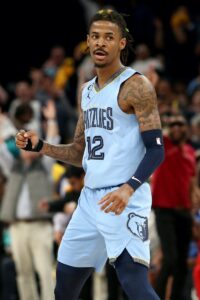 Ja Morant ($33,500,000)
Ja Morant ($33,500,000)
- Note: Morant’s salary will be 25% of the 2023/24 salary cap. This is a projection based on a $134MM cap.
- Jaren Jackson Jr. ($27,102,202)
- Luke Kennard ($14,763,636)
- Tyus Jones ($14,000,000)
- Steven Adams ($12,600,000)
- Brandon Clarke ($12,500,000)
- Ziaire Williams ($4,810,200)
- Desmond Bane ($3,845,083)
- Jake LaRavia ($3,199,920)
- David Roddy ($2,718,240)
- John Konchar ($2,400,000)
- Santi Aldama ($2,194,200)
- Kenneth Lofton ($1,719,864)
- Jacob Gilyard (two-way)
- Vince Williams (two-way)
- Total: $135,353,345
Dead/Retained Salary
- Kennedy Chandler ($1,719,864)
- Total: $1,719,864
Player Options
- None
Team Options
- Xavier Tillman ($1,930,681): Bird rights
- Total: $1,930,681
Non-Guaranteed Salary
- None
Restricted Free Agents
- None
Two-Way Free Agents
- None
Draft Picks
- No. 25 overall ($2,585,040)
- No. 45 overall (no cap hold)
- No. 56 overall (no cap hold)
- Total: $2,585,040
Extension-Eligible Players
- Dillon Brooks (veteran)
- Luke Kennard (veteran)
- Xavier Tillman (veteran)
- Desmond Bane (rookie scale)
Note: These are players who are either already eligible for an extension or will become eligible before the 2023/24 season begins. Brooks is only eligible until June 30.
Unrestricted Free Agents / Other Cap Holds
- Dillon Brooks ($17,100,000 cap hold): Bird rights
- Yves Pons ($1,774,999 cap hold): Non-Bird rights
- Total: $18,874,999
Note: The cap hold for Pons remains on the Grizzlies’ books from a prior season because it hasn’t been renounced. He can’t be used in a sign-and-trade deal.
Cap Exceptions Available
- Mid-level exception: $12,220,600
- Bi-annual exception: $4,448,000
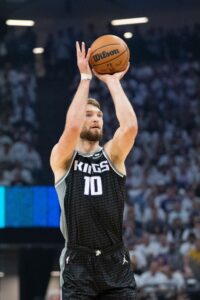
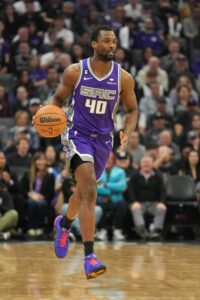 Barnes is extension-eligible until the end of June. He’s coming off a four-plus season run with Sacramento, having averaged a combined 15.4 PPG, 5.3 RPG and 2.3 APG on .472/.387/.827 shooting (and a strong 61.1 true shooting percentage). Barnes, who won a championship with the Warriors in ’14/15 during his third season, has made $85MM over the past four seasons, which feels about right for a solid starter. I think he’ll get something close to that again on the open market, whether it be from Sacramento or another team.
Barnes is extension-eligible until the end of June. He’s coming off a four-plus season run with Sacramento, having averaged a combined 15.4 PPG, 5.3 RPG and 2.3 APG on .472/.387/.827 shooting (and a strong 61.1 true shooting percentage). Barnes, who won a championship with the Warriors in ’14/15 during his third season, has made $85MM over the past four seasons, which feels about right for a solid starter. I think he’ll get something close to that again on the open market, whether it be from Sacramento or another team.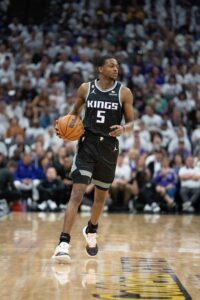 De’Aaron Fox
De’Aaron Fox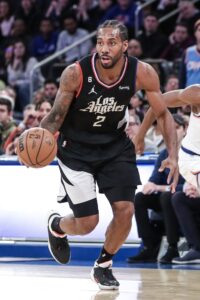 If we assume Leonard and George aren’t going anywhere, which seems like a relatively safe bet, the question this summer is how the Clippers will improve the roster around them.
If we assume Leonard and George aren’t going anywhere, which seems like a relatively safe bet, the question this summer is how the Clippers will improve the roster around them.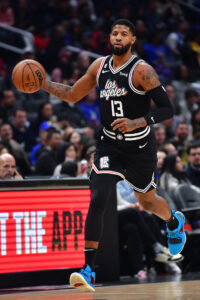
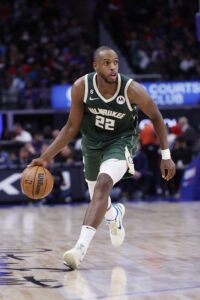 The first order of business for Milwaukee this offseason has reportedly already been decided — Raptors assistant Adrian Griffin will be the
The first order of business for Milwaukee this offseason has reportedly already been decided — Raptors assistant Adrian Griffin will be the 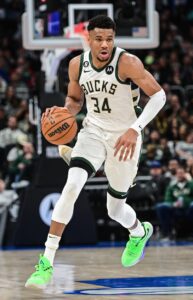 Giannis Antetokounmpo
Giannis Antetokounmpo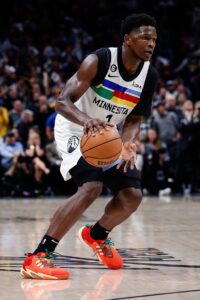 Minnesota is faced with a lot of difficult questions this offseason. The most prominent is whether or not the pairing of Gobert and Towns can ultimately lead to a championship when they’re taking up such a huge portion of the payroll, especially when it’s clear the future hinges on the evolution of
Minnesota is faced with a lot of difficult questions this offseason. The most prominent is whether or not the pairing of Gobert and Towns can ultimately lead to a championship when they’re taking up such a huge portion of the payroll, especially when it’s clear the future hinges on the evolution of 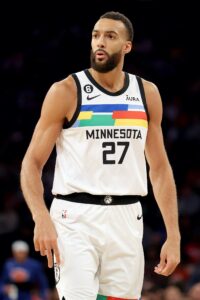 Rudy Gobert
Rudy Gobert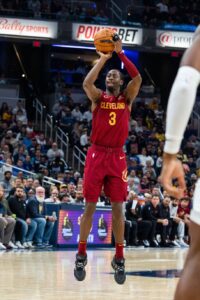 Cleveland doesn’t control its 2023 first-round pick (No. 26 overall), which will be sent to Indiana as part of the trade for LeVert. In fact, the Cavs don’t currently have any future tradable first-round picks due to the Mitchell deal, though they technically could give up swap rights in 2024.
Cleveland doesn’t control its 2023 first-round pick (No. 26 overall), which will be sent to Indiana as part of the trade for LeVert. In fact, the Cavs don’t currently have any future tradable first-round picks due to the Mitchell deal, though they technically could give up swap rights in 2024. Darius Garland
Darius Garland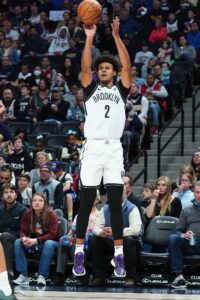 Re-signing
Re-signing 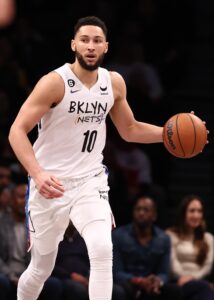
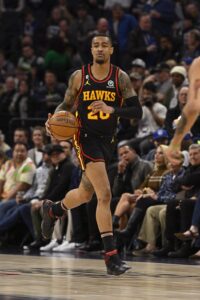 Atlanta has 10 players on guaranteed contracts entering 2023/24 for a grand total of $162.3MM. The projected luxury tax line is $162MM, and owner Tony Ressler has never paid the tax since he bought the team in 2015.
Atlanta has 10 players on guaranteed contracts entering 2023/24 for a grand total of $162.3MM. The projected luxury tax line is $162MM, and owner Tony Ressler has never paid the tax since he bought the team in 2015.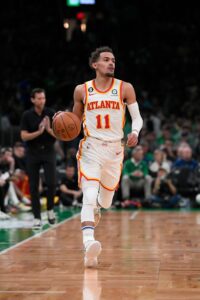
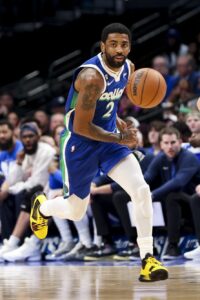 Dallas was highly criticized throughout the season for opting against re-signing
Dallas was highly criticized throughout the season for opting against re-signing 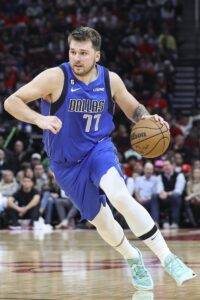 Luka Doncic
Luka Doncic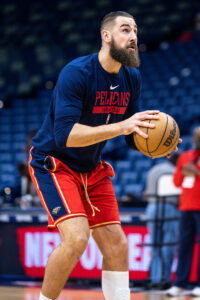 With nearly $144MM in guaranteed money committed to eight players, the Pelicans won’t have cap room this offseason. However, once they lock in low-cost team options and non-guaranteed salaries for players like
With nearly $144MM in guaranteed money committed to eight players, the Pelicans won’t have cap room this offseason. However, once they lock in low-cost team options and non-guaranteed salaries for players like 